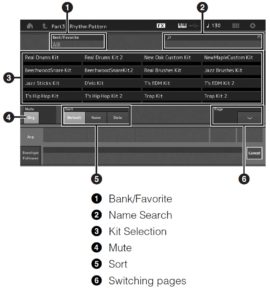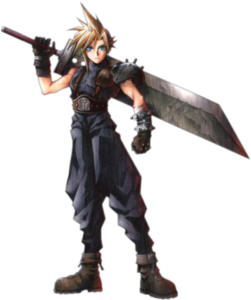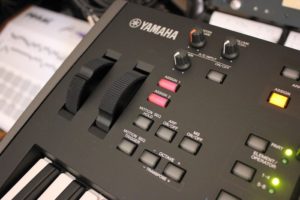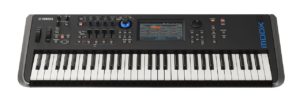After a veritable explosion of Yamaha MODX information on the Web, there isn’t too much new to say! One useful tidbit is MODX availability. Yamaha expect MODX to be available at retailers around September 27. Another tidbit is to download the MODX version 1.10 updater from the Yamaha support site, if you need it.
Folks shouldn’t forget the John Melas Montage/MODX tool set. Amidst all of the hoopla, John quietly released an updated tool set with MODX support. This is good news since it provides a MODX librarian, performance editor, Live Set editor and waveform editor — available separately or bundled. (Please see his Web site for details.)
I watched a little bit of the MODX launch live stream — enough to be duly impressed by DOMi. What a player! Her demo made a good background while I pulled together another donation to LIVING COMPUTERS: museum + labs. One take-away — it’s a long reach to the MODX8 PB/MOD wheels. The engineers needed the extra depth to accommodate the weighted keyboard action. Folks interested in the 88-key model should take this into account.
On Saturday, I spent an hour or so watching demo videos. For my purposes, the video by Blake Angelos (Yamaha) for Guitar Center is the best. He showed how to pull together an orchestral layer with Super Knob control. This is information that I can use. Thanks, Blake! Yamaha have really kept him running with the MODX launch.
Even though emphasis is on EDM and other pop — which pays the bills at Yamaha — there are very fine orchestral instruments hiding in plain sight on the Montage and MODX. In this regard, the Montage/MODX and Genos™ share sonic DNA by way of the underlying waveforms (AKA “the samples”). The separate product lines employ the waveforms in different ways (Extended Articulation versus Super Articulation), but the sound quality is amazing overall. Having worked with Genos over several months, it’s like an orchestral VST in a box, completed with scripted, articulated voices. Quite pleased.
I have such regard for the Montage acoustic instruments that I very seriously considered buying a Montage for my church gig. I passed mainly due to the weight and schlep factor. The MODX6 is a slender 14.6 pounds, a bit less than the MOX6 that I now transport and play. The MODX is a contender.
While evaluating Montage, I listed the new waveforms added to Motif XF and the new waveforms added to Montage. I was trying to decide if it made sense to upgrade to Motif XF on close-out or to go for Montage. [I decided to wait.] I’ll be using these tables, again, to compare MODX versus MOX because the MODX has the same waveforms and performances (voices) as Montage. Frankly, I don’t think there’s much question about “if”, so much as “when” to upgrade from MOX.
These are highly technical instruments. As a user, the Genos user interface (UI) is similar enough to the Tyros/PSR UI that I didn’t much too trouble making the transition from S950 to Genos. The transition from MOX to MODX is going to be a much bigger task, especially since I want to take advantage of scenes and macro control (AKA “the Super Knob”). Fortunately, the MODX UI is essentially the same as the Montage v2.5 UI and Yamaha have provided a fair number of “Mastering MODX” videos and resources on Day 1.
Copyright © 2018 Paul J. Drongowski






